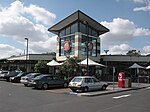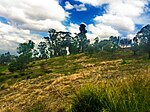Former Great Western Road Alignment, Prospect
Historical roads of New South WalesNew South Wales State Heritage RegisterProspect, New South WalesUse Australian English from June 2018

Former Great Western Road Alignment, Prospect is a heritage-listed stretch of road, now divided into four separately-named sections of road and partially divided by the M4 Western Motorway at, Prospect, City of Blacktown, Sydney, New South Wales, Australia. The road was initiated by Governor Lachlan Macquarie, likely surveyed by George Evans and built from 1815 to 1818 by William Cox. It is also known as The Western Road, The Great Western Road, The Old Western Road and The Great Western Highway. The property is owned by Blacktown City Council. It was added to the New South Wales State Heritage Register on 27 June 2014.
Excerpt from the Wikipedia article Former Great Western Road Alignment, Prospect (License: CC BY-SA 3.0, Authors, Images).Former Great Western Road Alignment, Prospect
Reservoir Road, Sydney Prospect
Geographical coordinates (GPS) Address Nearby Places Show on map
Geographical coordinates (GPS)
| Latitude | Longitude |
|---|---|
| N -33.8084 ° | E 150.9066 ° |
Address
Reservoir Road
Reservoir Road
2148 Sydney, Prospect
New South Wales, Australia
Open on Google Maps










